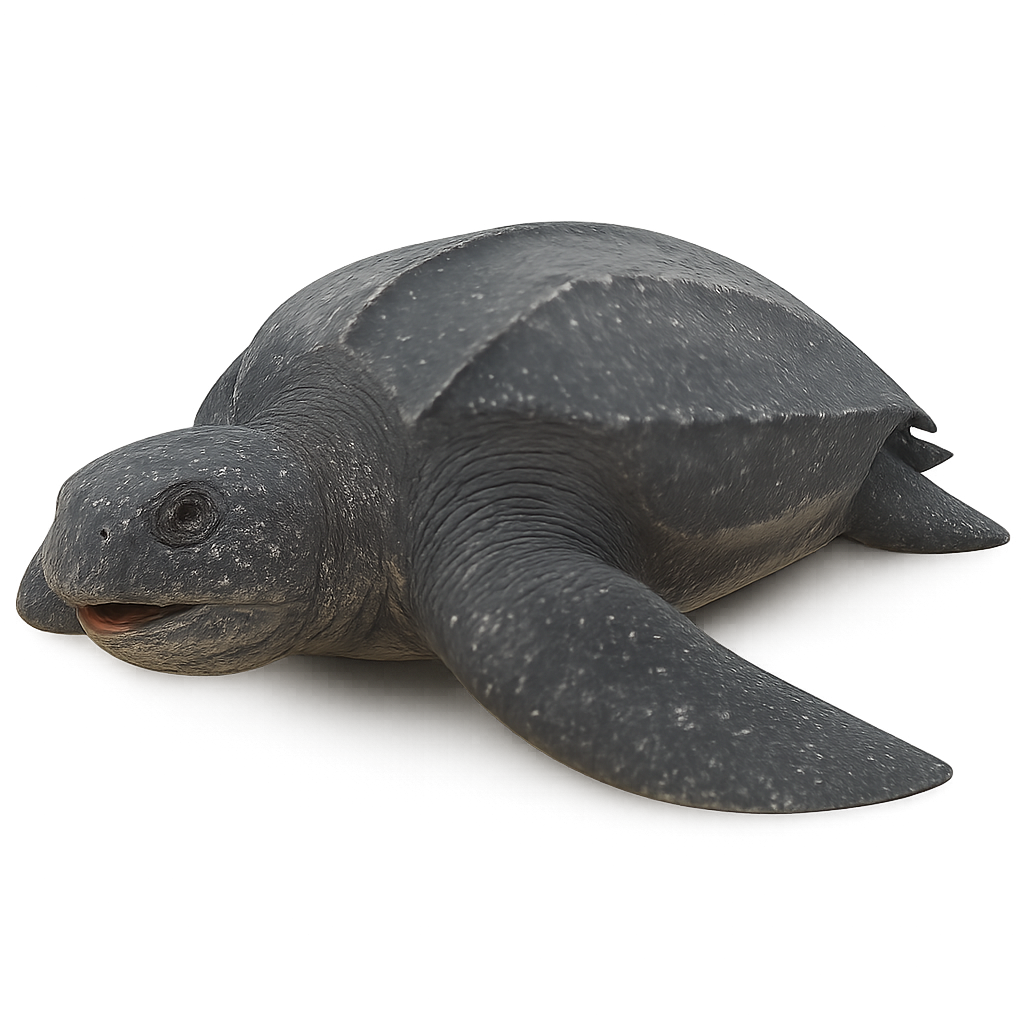Your wildlife photography guide.
Explore the leatherback sea turtle in detail, study its behavior, prepare your shots.
Where to observe and photograph the leatherback sea turtle in the wild
Learn where and when to spot the leatherback sea turtle in the wild, how to identify the species based on distinctive features, and what natural environments it inhabits. The WildlifePhotographer app offers tailored photography tips that reflect the leatherback sea turtle’s behavior, helping you capture better wildlife images. Explore the full species profile for key information including description, habitat, active periods, and approach techniques.
Leatherback sea turtle
Scientific name: Dermochelys coriacea

IUCN Status: Endangered
Family: DERMOCHELYIDAE
Group: Reptiles
Sensitivity to human approach: Suspicious
Minimum approach distance: 50 m
Reproduction period: March to July
Incubation: 9-12 mois
Births: March to July
Habitat:
Tropical and subtropical oceans, coastal zones, and sandy beaches for nesting
Activity period :
Mainly active at night, generally discreet during the day.
Identification and description:
The Leatherback Turtle is the largest of all sea turtles and one of the largest reptiles in the world. It typically measures between 2 and 2.5 meters in length, with a weight ranging from 250 to 700 kg, although some individuals can reach up to 900 kg. Its shell is usually dark in color, sometimes tinged with gray or brown, and is covered with small, tile-like plates. The Leatherback Turtle is an excellent swimmer, capable of covering long distances across oceans. It primarily feeds on jellyfish, which it catches while swimming in deep waters. Despite its impressive size, the Leatherback Turtle is critically endangered due to plastic pollution, the loss of its nesting habitats, and poaching. Its population is declining, and it is protected in many countries.
Recommended lens:
200 mm – adjust based on distance, desired framing (portrait or habitat), and approach conditions.
Photography tips:
To photograph the leatherback turtle, it is best to use a telephoto lens to capture their majestic movements in the water or as they arrive on the beach. The soft light of the morning or evening is ideal to avoid harsh shadows and capture sharp images. Stay discreet, especially during the nesting period, and maintain a safe distance to avoid disturbing them.
The WildlifePhotographer App is coming soon!
Be the first to explore the best nature spots, track rutting seasons, log your observations, and observe more wildlife.
Already 1 449 wildlife lovers subscribed worldwide

